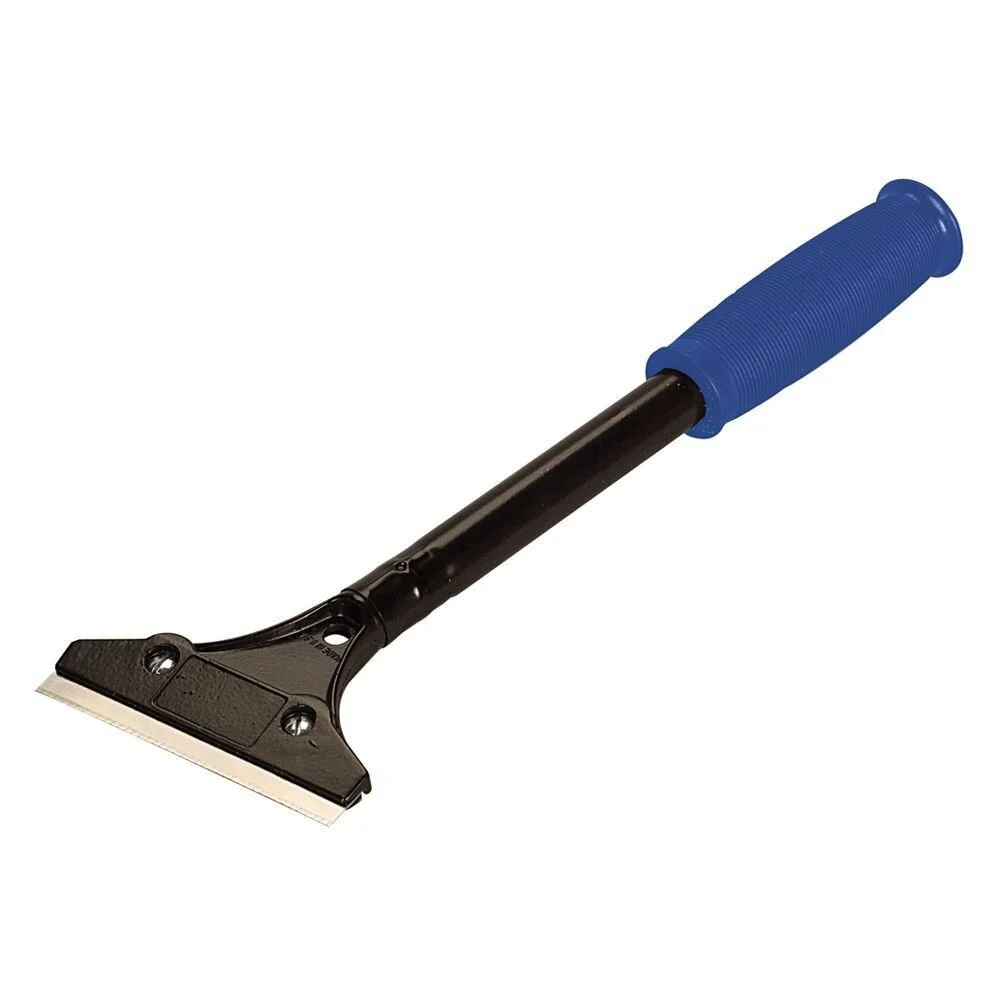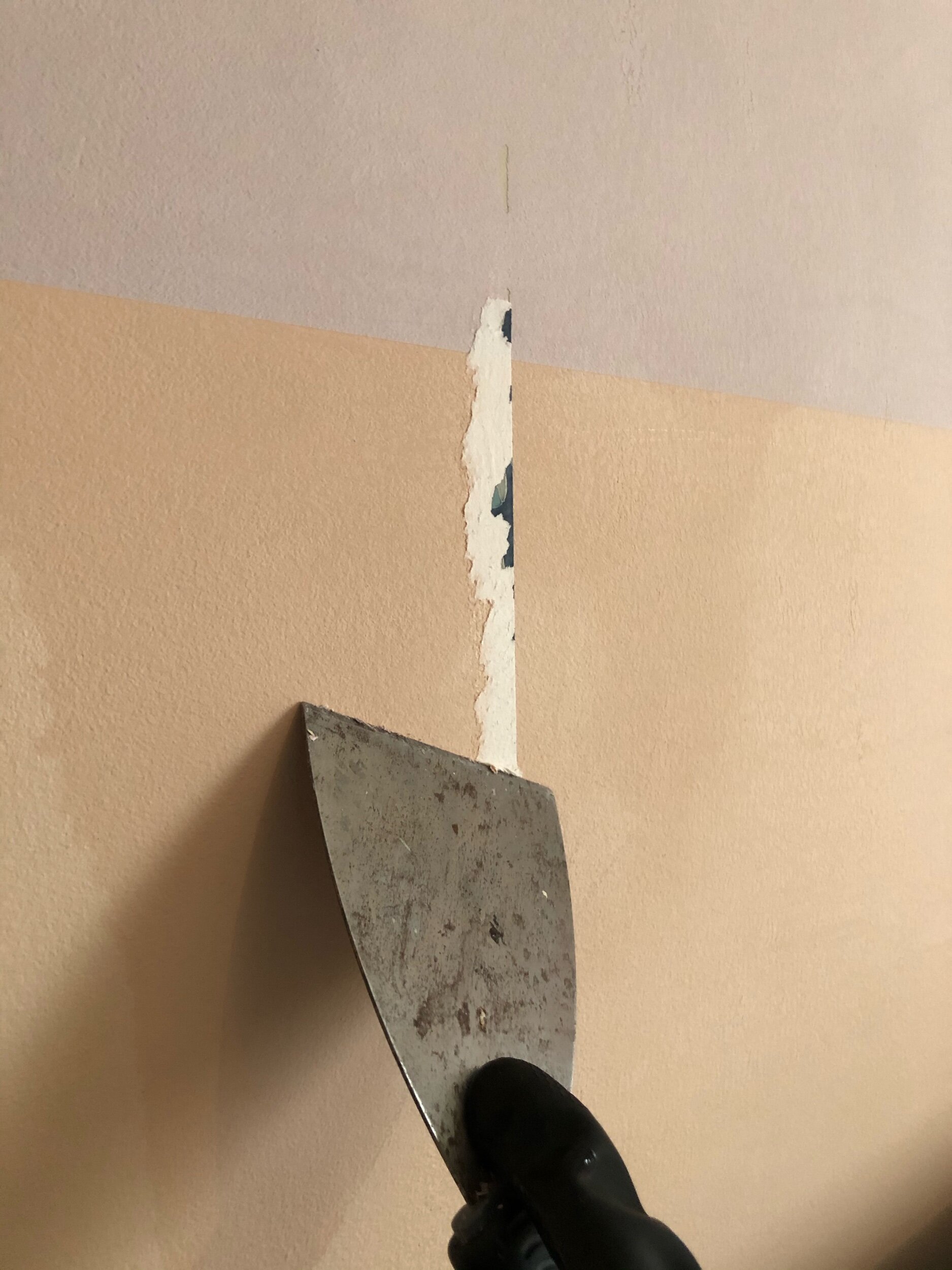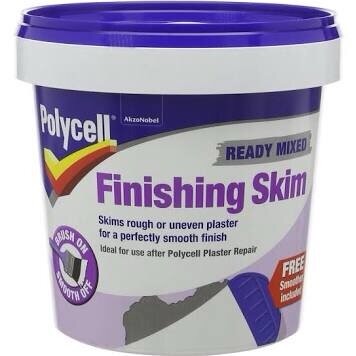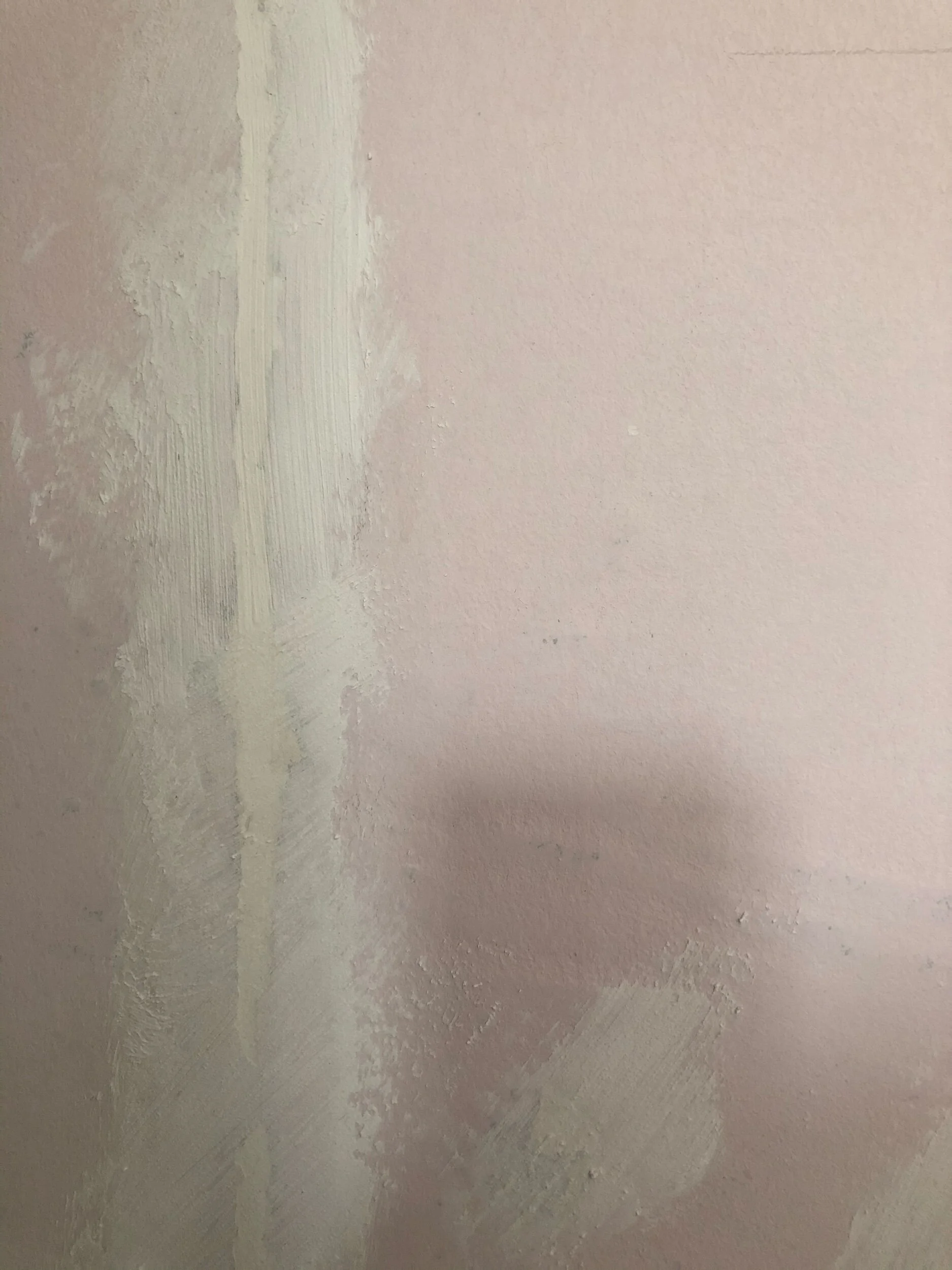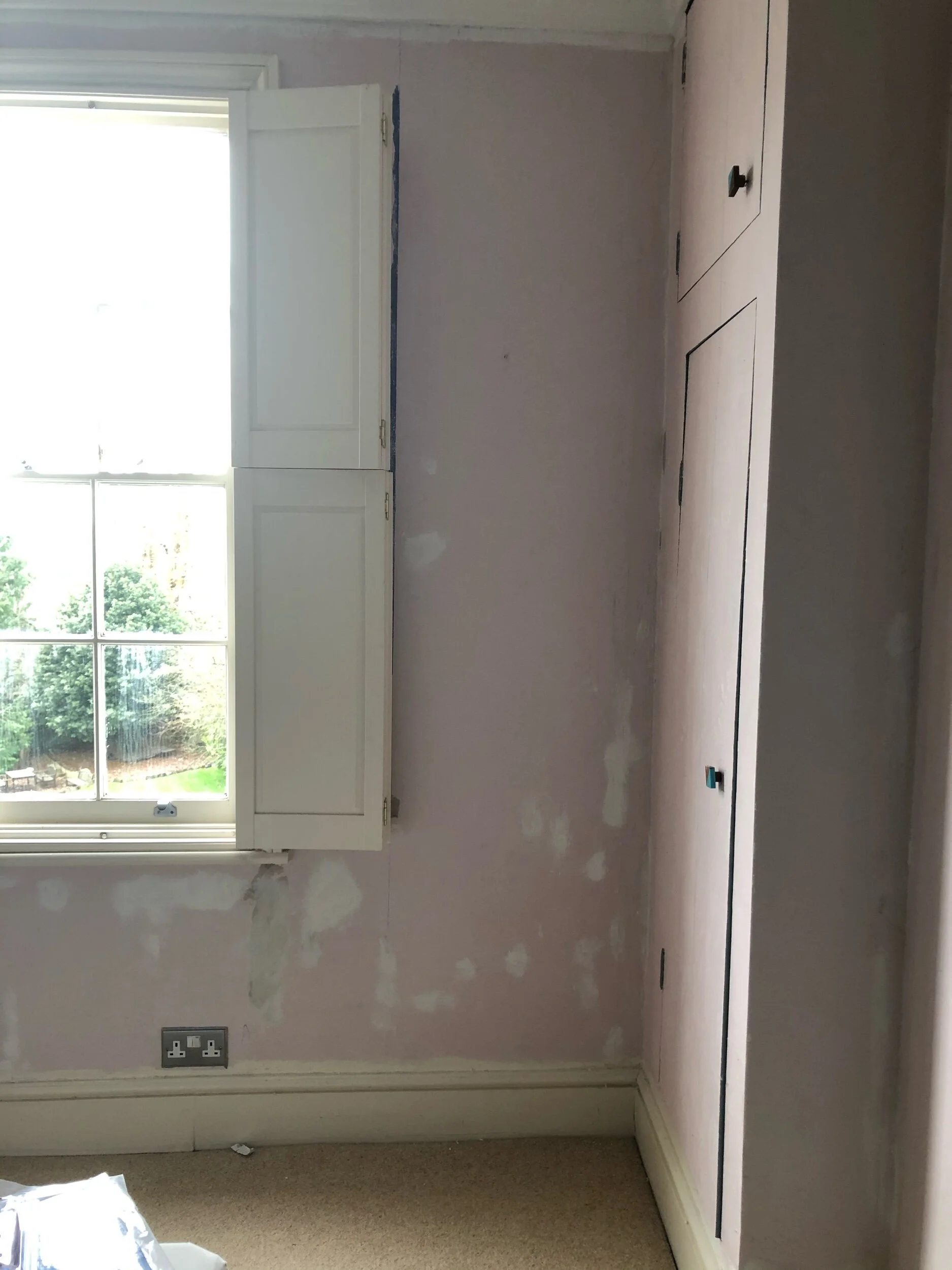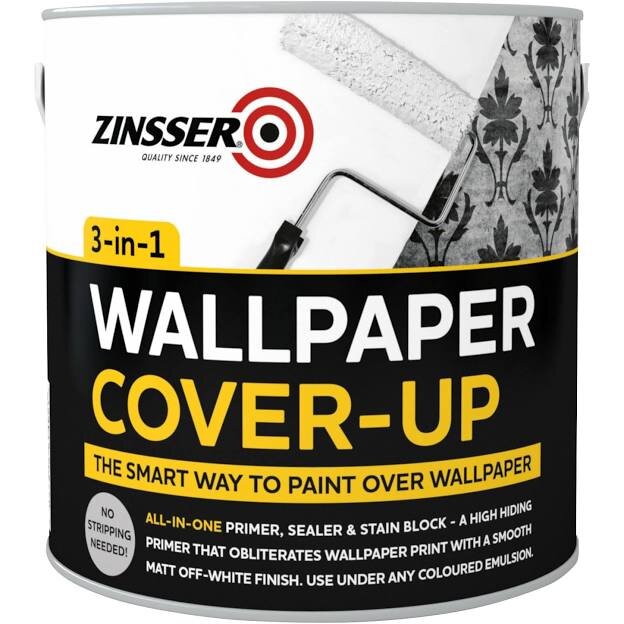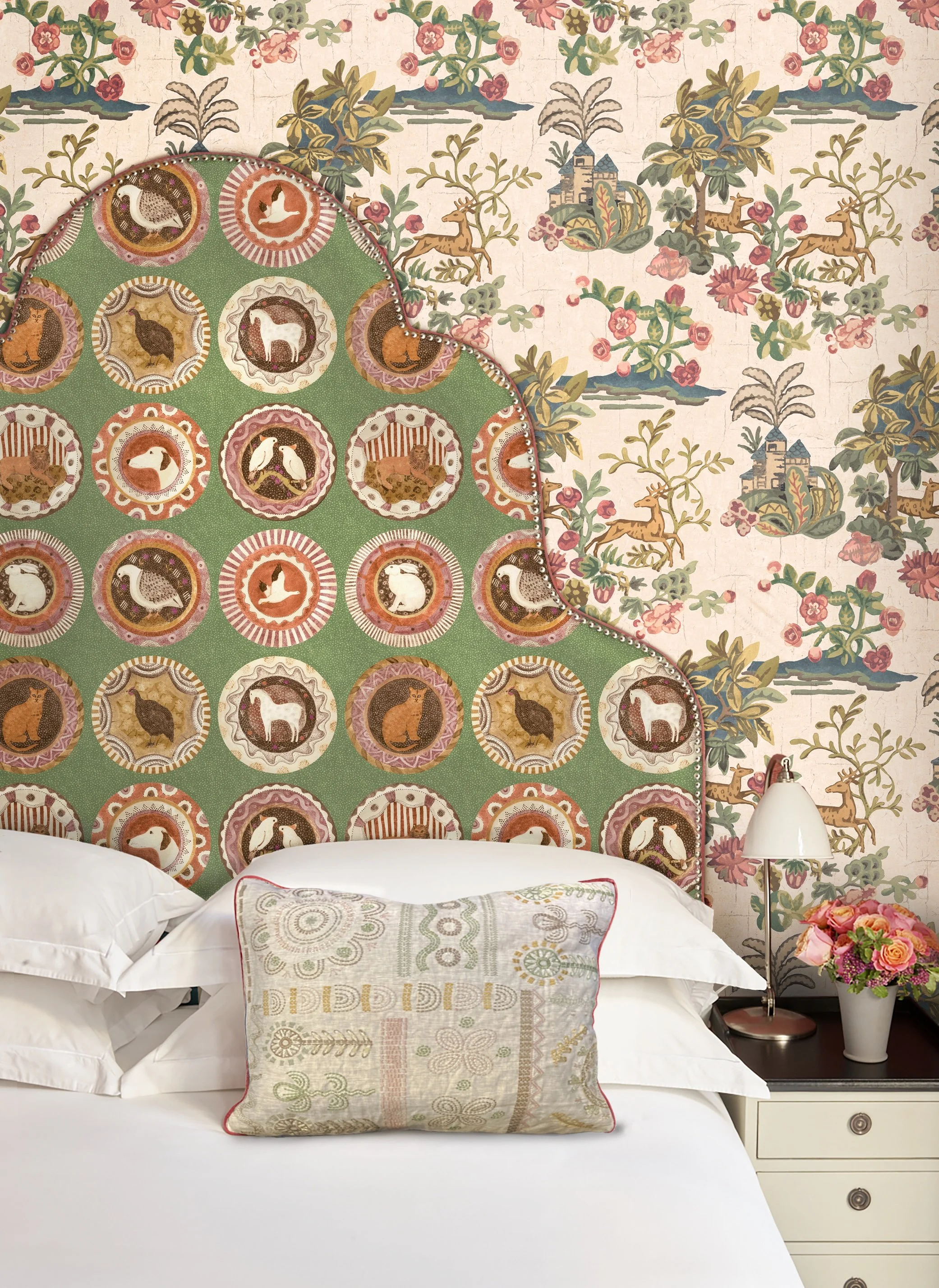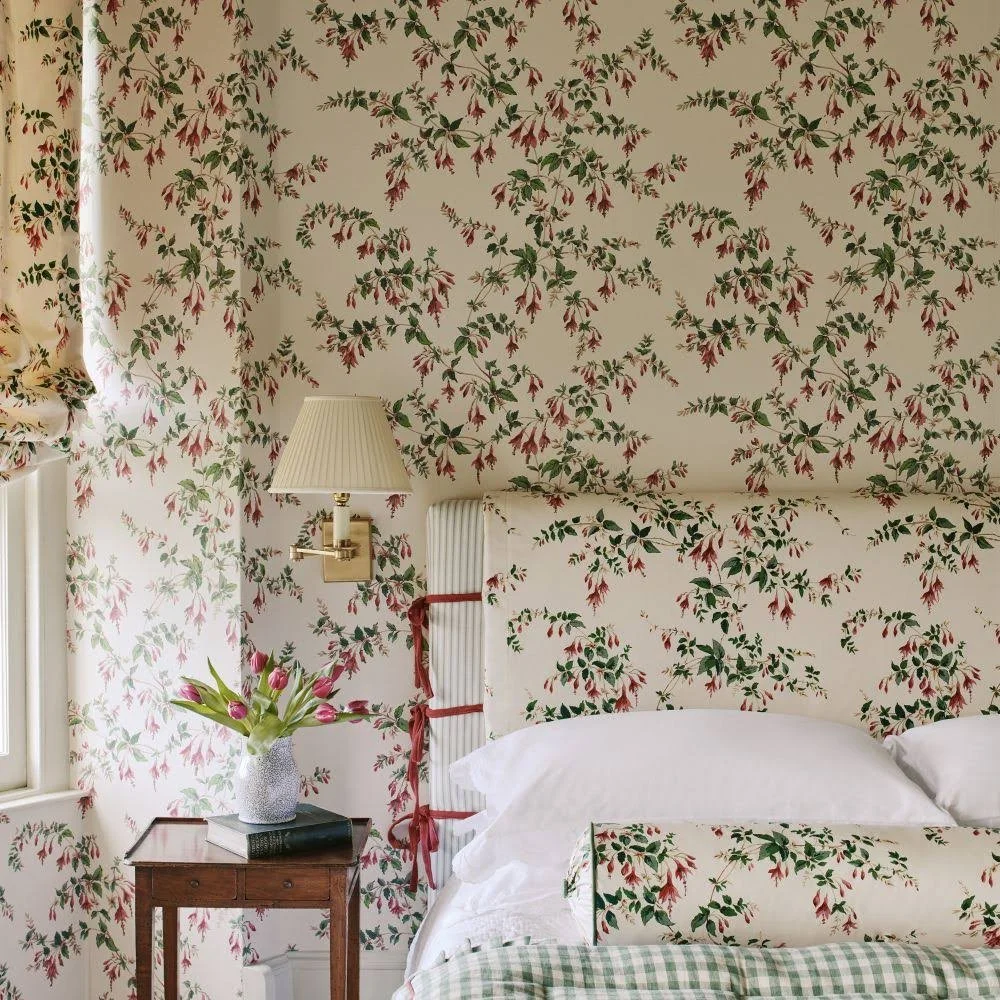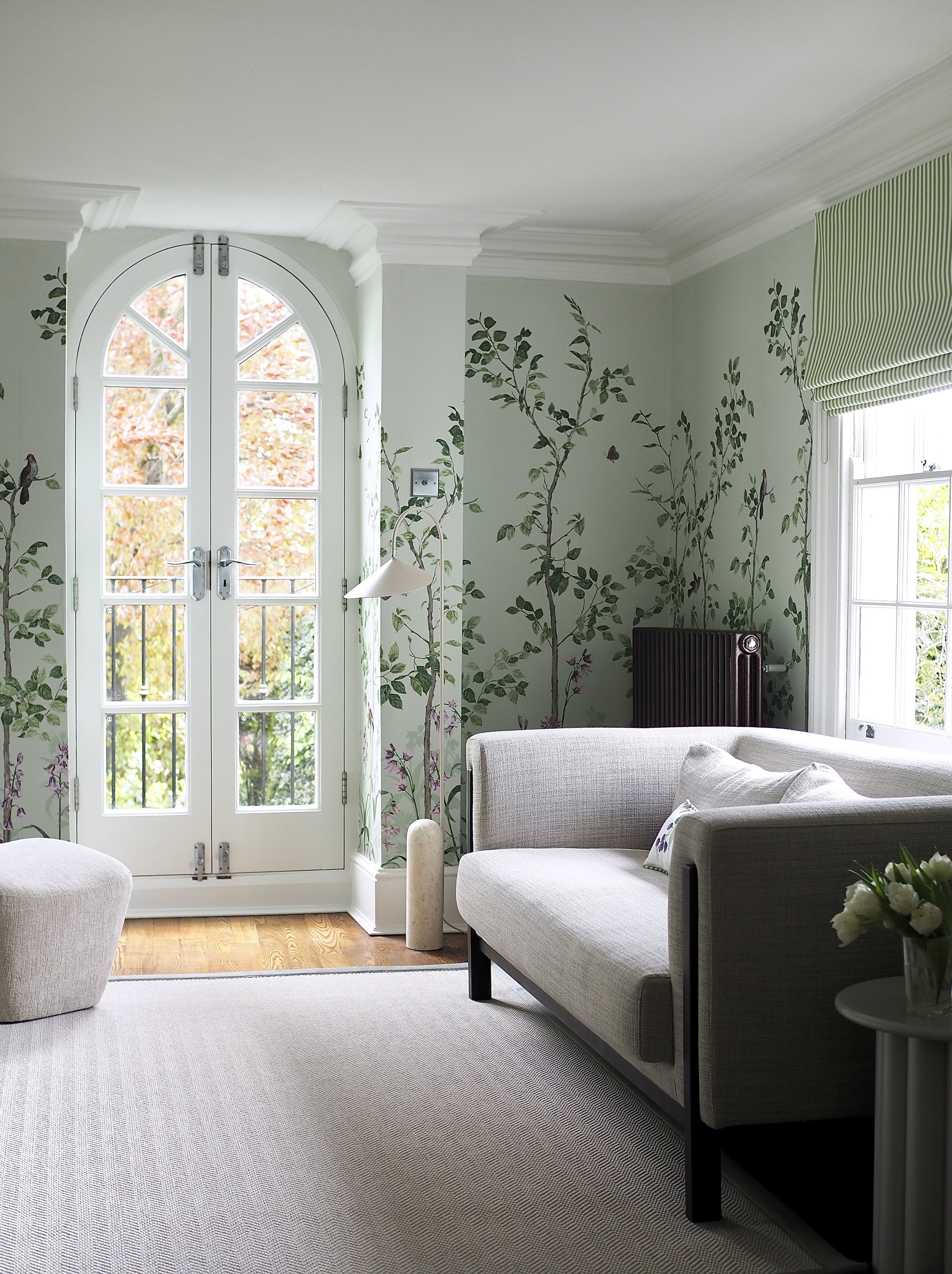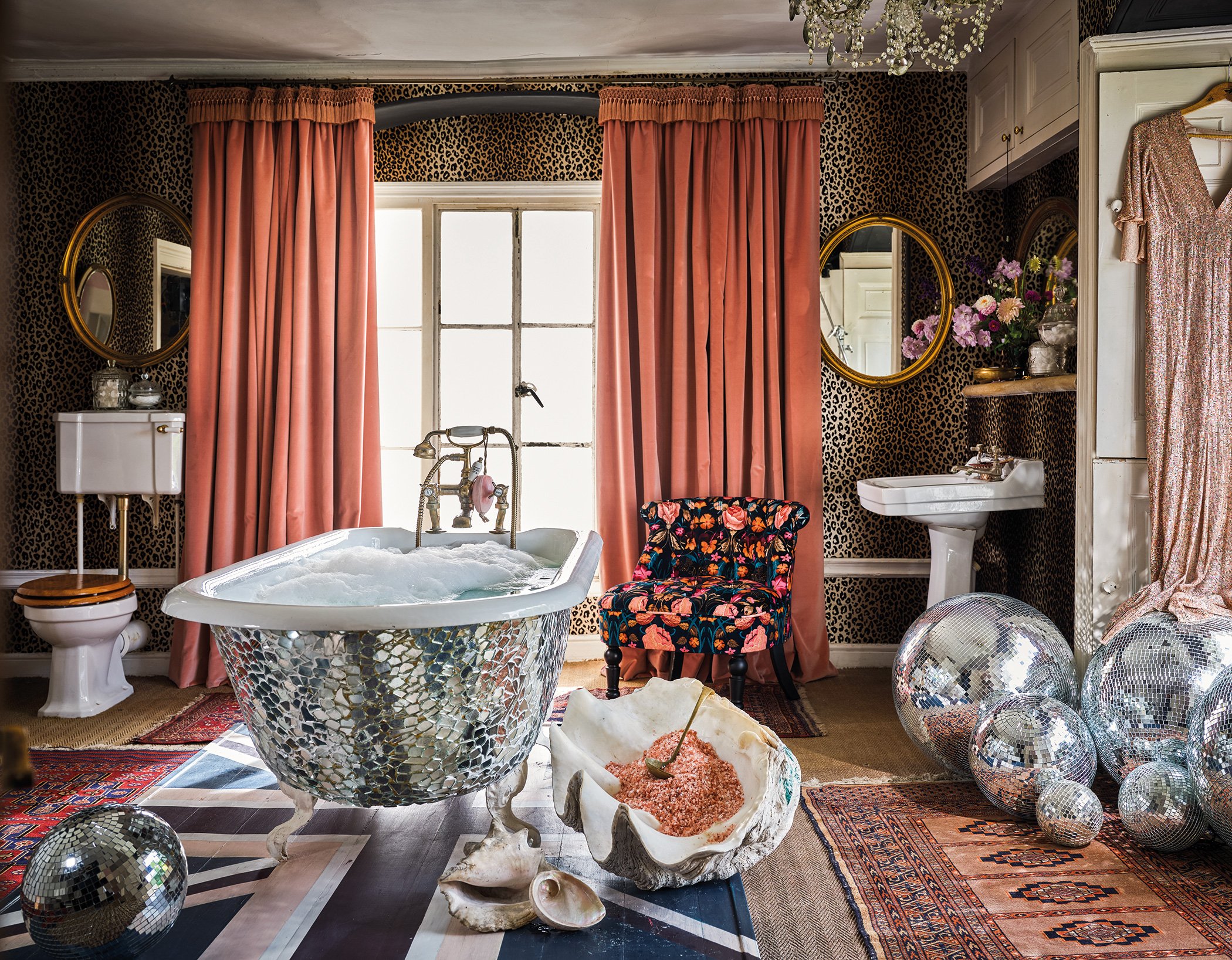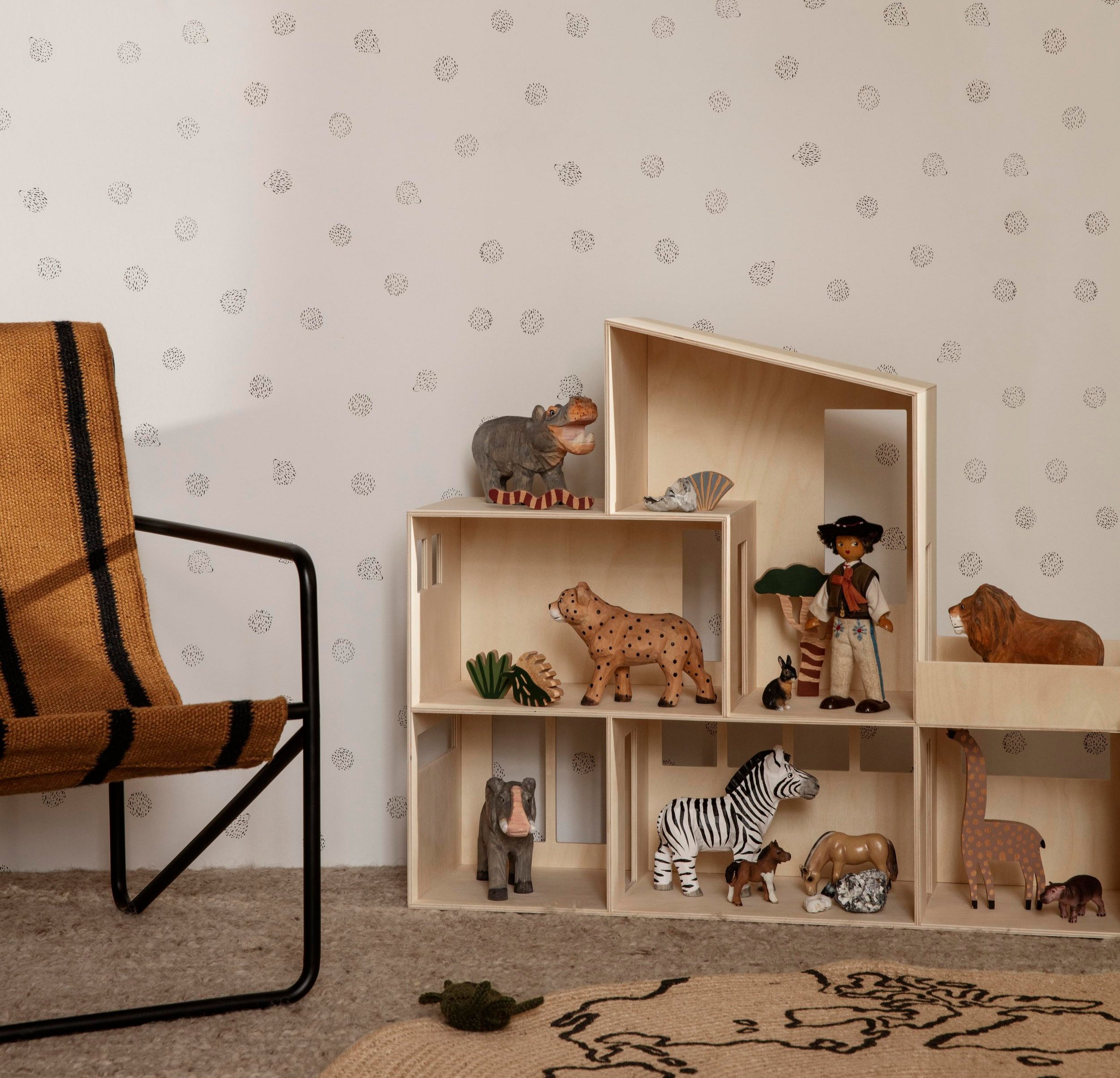How To Remove Wallpaper And Make Good The Walls
Stripping off old wallpaper is a tedious and boring DIY job - but it is vital to do this task properly before you redecorate. Residue paste, flecks of old paper and damaged walls will make any new paint or wallpaper look terrible, so it is important to spend time and energy on the preparation before starting on your new room scheme.
How quickly and easily your old wallpaper comes off the wall often depends on a number of factors: the type of wallpaper it is, how long it has been there for, plus how lucky you are! There are a number of ways to try and strip wallpaper, which I have listed below in this post. As it has also been a DIY task I’ve recently undertaken in my own home, I thought I would share my experience and how I created the perfect base for my new paintwork.
TO START..
Before you invest in the tools you will need for this job, start off by testing out how fastened your wallpaper is to the wall. Grab a corner of the wallpaper and pull it to see how easily it comes off by hand. If it appears to come off easily in large pieces without significant damage to the plaster underneath, then I would suggest that you only need to use scraping tools and a liquid wallpaper stripper for the job. If you can only grab tiny little pieces of paper and the wallpaper seems to be going nowhere, I would skip down to the section of this post titled ‘Using A Wallpaper Steamer’.
Regardless of if the job looks like it will be easy or a lot more effort, you should invest in a wallpaper stripper tool. Your basic tool like the Harris stripper (above, left) is great for general use. If you have to remove wallpaper from hard-to-reach areas like behind radiators, I would also invest in a long-handled scraper. These tools get under the paper and slice it off the plaster, saving you from having to try and peel it off with your fingers.
Using A Liquid Stripper..
In the room at home that I was stripping, I was lucky enough that most of the wallpaper could be pulled easily off the walls in large chunks. For those leftover strips of paper and stubborn areas, I decided to use Zinsser DIF concentrated wallpaper stripper to get the remains of the paper off the walls. Wallpaper stripper is a chemical liquid that reacts with the paper and the old paste and aids it to be scraped off easier than trying to remove wallpaper that is dry. Some people swear by just using soapy water -or water with a washing detergent or softener mixed in - but for a small amount of money, I always think it is better to just invest in something meant for the job in hand.
Score your old wallpaper lightly before applying a chemical stripping agent.
Before removing wallpaper with a liquid concentrate, you will need to lightly score the existing wallpaper in order for the stripper to penetrate the paper. The cheapest way to do this is by making light indents with the corner of your wallpaper scraper or with a Stanley knife. However, be careful not to cut too deeply and damage the walls underneath the paper. You should only ever score the paper and not go below the surface of it. If you do not feel confident to not damage your walls in this way, invest in a Paper Tiger which will score your old wallpaper with no damage.
A Paper Tiger will score your wallpaper without the risk of harm to your walls.
Once you’ve scored your paper, wear protective gloves, glasses, plus a DIY respiratory mask and apply your liquid stripper to the walls with either a large sponge or a plastic spray bottle to evenly distribute the stripping agent. Leave on the walls as per the manufacturer’s instructions, then use your scraper tool to easily pull the paper apart from the walls. Protect your floors and have an old rag to hand just in case you distribute too much of the chemical stripper.
To strip wallpaper that was quite easy to come off the wall, I simply used a concentrated wallpaper stripper agent and a wallpaper scraper tool.
Using protective gloves, I applied the chemical mix to stubborn pieces of wallpaper with a plastic spray bottle.
Following the manufacturers instructions for the chemical stripper, I used a scraper to easily remove the paper once the stripper was given enough time to work.
Using A Wallpaper Steamer..
If you have loads of wallpaper to remove or the wallpaper just won’t budge, then your best bet is to invest in, borrow or hire a wallpaper steamer. A steam stripper provides a high level of hot moisture that pushes paper away from the walls. Simply press the steam pad against the wall then glide the paper off with your stripping knife. The downside with a steam stripper is that if you oversteam you can easily damage and loosen the plaster under the paper. You also need to be careful to protect yourself (always follow manufacturers safety advice) as obviously the steam is really hot.
This wallpaper steamer is great value at £40, via Amazon UK
Once The Wallpaper Is Off..
Chances are that once you’ve got all your wallpaper off the walls you’ll have to address some problem areas. Regardless to the stripping method that you have used, loose paint, damaged plaster and residue adhesive are all common problems and you’ll need to pay special attention to these areas to provide a smooth, level surface ready for painting or re-wallpapering.
Flaky Paint Holes..
If your walls had a few layers on paint on them before they were wallpapered, you might find that patches of these old paint layers came off with the paper. Not deep enough to need to be filled with a filling agent, these holes still need to be addressed (especially if you are applying new paint) as there will be uneven marks if you do not smooth them out.
When fixing these flaky paint holes at home, I first used the wallpaper scraper to remove any large, loose pieces of paint. I then used a hand-sander to smooth down the rough edges (or you can simply use a piece of sandpaper). To fill the uneven areas, I used a patching compound to raise the uneven wall surface. I always use Polycell Finishing Skim that I apply with a paintbrush. Once dry, I sand back the compound and the area is smooth and level.
I use Polycell Finishing Skim to even out damaged areas
Areas of old damaged paint filled in with Polycell Finishing Skim
The nice even result once the Finishing Skim has been sanded back.
Damaged Plaster..
If you have deeper holes in your wall that need to be filled, you can use either Polycell Pollyfiller for smaller patches or Polycell Plaster Repair for larger problem areas. Clean out the area of damage to make sure all the loose plaster has been removed, then press in the lightweight mixture with the accompanying plastic spatula. Wait for it to dry then sand it back until smooth.
Use Polycell Plaster Repair to fill any large areas of damage
My bedroom walls after being ‘patched up’.
For Residue Wallpaper Paste..
For leftover flecks of wallpaper, sand back your walls with a hand sander or sandpaper. If you can see remains of glossy wallpaper paste that will not come off with sanding you’ll need to apply a primer if you are painting the walls so that the old glue doesn’t seep through your new paintwork, leaving unsightly marks. The perfect sealer for this is Zinsser Gardz ; this thin, milky product should be applied with a paintbrush or a roller over old paste and left to dry. Gradz will form a barrier between the paste residue and your new paint so there will be no sign of shine or rough textures. Before applying Gardz, wash down your walls with Sugar Soap after sanding to get rid of any loose flecks of grit and dust.
If It All Just Sounds Like Too Much Hard Work..
If reading this post has left you deflated and like it just doesn’t sound worth the effort, then you’d probably like to know that you can paint over wallpaper! Of course, you won’t get the smooth finish that you would if you had removed the wallpaper and took it back to the plaster, but if you are happy for a look that is more like paint over lining paper, you should apply Zinsser Wallpaper Cover-Up. Rather than paint directly over wallpaper where colours and patterns may shine through, Wallpaper Cover-Up blocks any prints and fills any lines and provides a smooth base for painting over.
Stripping my whole bedroom of wallpaper has felt like a thankless job. Yet, now I am painting, I am so pleased that I spent the time and effort removing the paper and any residue completely as I am getting a perfectly smooth finish with the paint. To see my bedroom room reveal in full and how I went from a bold, floral blue wallpaper to a smooth, neutral and matt paint finish, do sign up to my newsletter in the box below…



